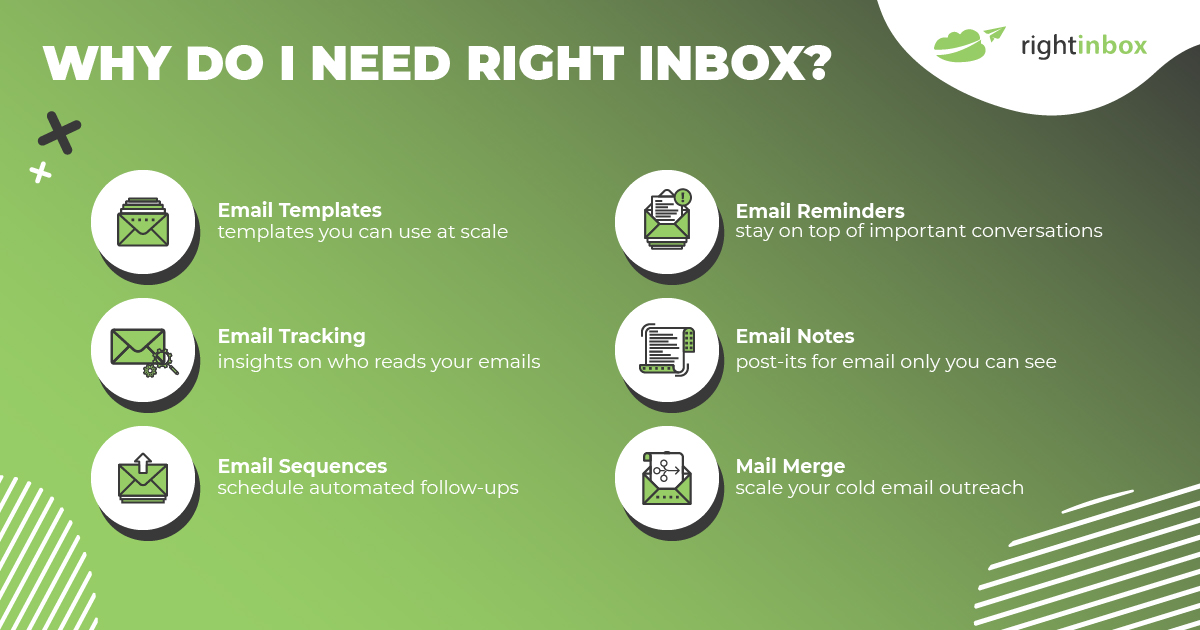The business world never sits still. As the internet makes it easier than ever to start a business, more companies are competing against each other and vying for the market’s attention.
To keep up with the competition, businesses need to ensure that they have the right tools in their arsenal.
When it comes to sales and cold outreach, Mailshake is a great tool that can help your business keep up with the times and grow at a lightning-fast rate. But it isn’t the only tool on the market, and there are several other companies that deserve your consideration before you make a purchase. Here, we’re going to go over 9 of the best alternatives to Mailshake so you can make an informed decision about how to move your business forward.
What is Mailshake?
Mailshake is a sales engagement and automation tool that allows you to boost your lead generation and link building efforts. It lets you:
- Schedule follow-ups to be sent automatically
- Send personalized cold emails to potential customers in bulk
- Assign sequenced tasks to reach prospects through phone and social media
- Integrate it with third-party apps such as Salesforce, Hubspot, and Pipedrive
- Gain an insight to the analytics of your outreach campaigns through real-time notifications
Who is Mailshake for?
Mailshake is for anyone who wants to automate cold email outreach campaigns and keep an eye on their effectiveness at the same time.
Some of the most common users of Mailshake are small B2B businesses, marketing agencies, and sales professionals.
However, it’s not for someone who’s looking for a more robust marketing automation solution with a built-in sales CRM. Similarly, it may not be the best choice for B2C email marketers.
Drawbacks of Mailshake
1. Although it supports custom tracking domains, setting them up is not an easy task. This is why many people skip doing it and end up getting their emails marked as spam.
2. Mailshake has a separate interface that can’t be accessed directly from your Gmail or Google Workspace interface.
3. It can get really expensive. Because it charges per user, the total cost increases proportionally with an increase in team members. So, for a 10-member team, you could end up paying $1000 every month just for your outreach tool.
9 Best Alternatives to Mailshake in 2022:
1. Right Inbox

If you’re a small business, some of Mailshake’s features may be overkill. For example, as useful as the auto-dialer can be, freelance photographers likely aren’t calling dozens of leads each and every day.
That’s where Right Inbox can come in. This handy Gmail extension can help you keep you on your A-game with features like email tracking, templates, sequences, email scheduling, and follow-up reminders.
Each of these features make a different part of your day-to-day more efficient. Email tracking, for example, can help you make better decisions about when to follow up – has your lead opened your email but didn’t respond? Or did they miss it entirely? When you always know the answer, you can act accordingly.
Email templates can save you time when you’re sending out a large volume of similarly worded emails, while sequences take the legwork out of your email follow-up by allowing you to schedule when your emails go out. Plus, you can set follow-up reminders so that you don’t forget to check back on them and reconnect in a few days or weeks.
Right Inbox has both a free plan and a paid plan. Pricing for the paid plans, starts from $7.95. Download for free from the chrome store today.
2. Yesware
Yesware is an extension that works with both Outlook and Gmail. Its feature set includes email tracking, automated email scheduling, a meeting scheduler, follow-up templates, analytics, and integrations.
In many regards, Yesware is quite similar to Right Inbox: you can use it to track your emails, schedule when you want your emails sent ahead of time, and speed up your workflow with templates. It also integrates with LinkedIn and Salesforce.
However, it is much more expensive than Right Inbox. Yesware does not offer a free plan, and the lowest tier, Pro, starts at $15/month paid annually. After that, it jumps up to $35/month for the Premium plan, and $65/month for the Enterprise plan.
If you’d prefer to pay monthly, pricing switches to $19/month, $45/month, and $85/month respectively.
Negatives: A lot of users have said that it is constantly lagging, glitching, etc and is overall a really slow tool. Users in the past have found themselves waiting for Yesware to pick up the pace alongside the other tools/integrations that they use daily. That is why more and more users have found themselves looking for Yesware alternatives in recent years.
3. Mixmax
Mixmax is an email tool that integrates with Gmail exclusively. Its feature set is similar to the other two options we’ve covered already. With Mixmax, you can track your emails, use templates, schedule meetings and emails, automate sequences, and integrate with other tools.
Compared to Yesware, Mixmax’s integration selection is much larger, which may be overwhelming if you don’t need all of the features it offers.
Additionally, you can collaborate with team members on how to write certain emails without leaving your inbox, send polls and surveys via email, and more. Like Mailshake, MixMax comes with an autodialer.
Currently, the tool integrates with tools like Salesforce, Pipedrive, and Slack.
Mixmax has a free version. Its paid plans start at $9/month and go up to $49/month (billed annually).
Negatives: On the various review sites previous users are all in agreement that there customer service is extremely bad. With slow response time to tickets and not enough feedback on how to fix a users issue this is something to watch out for if you’re looking at Mixmax as an alternative to Mailshake.
4. Outreach.io
Outreach is a sales platform designed for sales teams. As such, it’s unlikely to be a good fit for very small businesses or freelancers.
Outreach built its entire feature set around sequences. The core idea behind the platform is that sales reps should be able to plan their entire strategy right away and schedule follow ups from the get-go.
To improve efficiency even further, Outreach also includes in-depth analytics that managers can use to view their team’s performance. Operations can use this information as well to bolster the sales funnel and make it more effective.
If you’re pursuing leads via more than just email, Outreach also has useful multi-channel features that can help you streamline your sales process.
Outreach does not currently make their pricing public. To find out how much it will cost you, you need to reach out to Outreach directly.
Negatives: The tool can be buggy at times. There have been issues in the past with speed and with prospects / sequences updating after a change is made. Changes made to sequences or prospects often take minutes to reflect.
5. Reply.io
Reply.io is a sales engagement platform with a unique selling point: it automates email searches à la an autopilot version of Voila Norbert. It can also search for prospects on LinkedIn as well.
Reply.io divides its offerings into four categories: discover, engage, execute and improve. Once you’ve found your lead with automated search, you can use Reply.io to get in touch with them via email, SMS, WhatsApp messages, and more.
After that, Reply.io can help you execute the sale by providing you with a list of tasks to complete every day. Finally, you can view your sales results through in-depth analytics to make informed strategic decisions.
Reply.io is not cheap. If you’re an individual, pricing ranges from $55/user/month to $90/user/month. If you’re a business with a team, pricing starts at $45/user/month and reaches up to $63/user/month. Agencies need to contact the company directly for a quote.
Negatives: Lack of features compared to Right Inbox and other alternatives. Given the high pricing structure of Reply.io this is a major obstacle.
6. Mailchimp
Previously, Mailchimp was only a cloud-based email marketing solution. And it offered similar features like email tracking, custom analytical reports, and complete automation of email marketing campaigns.
But now it has upgraded to become an all-in-one marketing platform and offers so much more than other tools like Mailshake. With Mailchimp, you can also create Facebook ads, landing pages, websites, postcards, and much more.
Another thing that sets Mailchimp apart is the insane integrations that it offers. Currently, you can integrate it with more than 200 apps across several categories.
To get a taste of what Mailchimp offers, you can try its basic version, which is free. If you like it, you can upgrade to its paid versions that start from $11/month and go all the way to $299/month.
Negatives: Mailchimp’s interface is a bit clunky. This is why it might take you a lot more time to design and organize the same campaigns through Mailchimp than through other similar tools.
7. Lemlist
Lemlist is a sales outreach tool that helps you convert your prospects into customers through 3 unique features.
The first is its ability to create tailor-made and distinct sequences. To do this, Lemlist allows you to add personalized images, videos, and custom landing pages to your emails.
The second is an email warm-up feature named Lemwarm. What Lemwarm does is that it begins by sending fewer personalized emails and increases them as more and more people start to engage with them. This way, Lemwarm prevents your emails from getting marked as spam and maximizes their deliverability.
The third is a multi-channel feature, which is similar to what Outreach offers.
You can get all of these features for $99/month/user, which can get pretty expensive if you have a big team.
Negatives: Because Lemlist has a separate interface, managing your campaigns through it is time-consuming and tedious. Also, there is no free version of Lemlist (you can still try it through a 14-day free trial).
8. GMass
GMass is a plug-in made for simple email outreach-related tasks. With GMass, you can create campaigns, send personalized emails, create automatic follow-ups, and track real-time analytics. All without ever leaving your Gmail inbox.
You can also get basic CRM work done through the tool. To get advanced CRM features, you can integrate GMass with one of the leading CRM platforms — Salesforce.
About pricing, you can subscribe to GMass’ enterprise version for $50/month. While this may seem cheaper than other tools like Yesware, keep in mind that the tool offers limited features.
Negatives: This extension has no built-in email templates. And it works only on Gmail, which must be run on Google Chrome. Another downside is that GMass doesn’t offer exciting integrations like most other email marketing tools.
9. SalesLoft
SalesLoft is a sales enablement platform that is also a decent alternative to MailShake. It helps sales teams keep track of their opportunities all the way through the pipeline. That way, your team can spend more time on sure-thing deals and less effort on time-wasters.
Features include Cadence to schedule sales meetings, and Conversations which identifies your highest converting sales approaches.
You can even record calls with transcriptions which allows you to review your previous conversations for important topics.
SalesLoft requires you to reach out for a custom quote, as they do not list any sure pricing on their website.
Negatives: The app claims to integrate with HubSpot seamlessly, but users often complain about integration glitches and slow reporting — leading to inaccurate data. In addition, filtering within the Cadence feature is a little messy and overdesigned.

Track emails, email reminders & templates in Gmail for free
Upgrade Gmail with the features it’s missing
Add to GmailDavid Campbell
David Campbell is the editor of the Right Inbox blog. He is passionate about email productivity and getting more done in less time.




